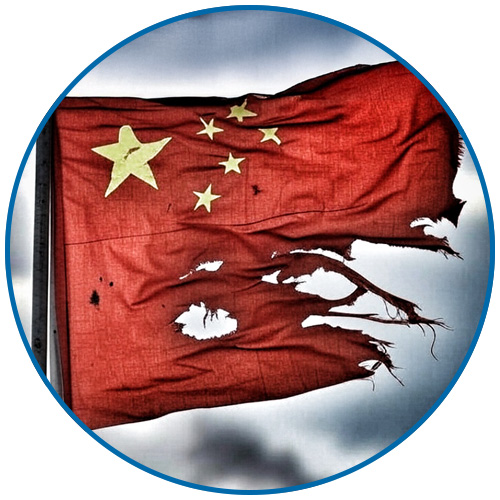|
|
China’s Plastic Industry
Loses Edge Amid Tariff SqueezeChina’s plastic industry, long a global leader due to its cost advantage, is buckling under a 125% tariff on U.S. ethane imports, a vital feedstock for ethylene, the core of plastics used in products from bags to medical devices. This tariff, part of the U.S.-China trade war, has spiked ethane costs from $150 to $337.5 per ton, flipping a $100-per-ton profit into a $184 loss. Compounding the crisis, a 145% U.S. tariff on Chinese plastic exports creates a double hit: higher input costs for manufacturers and restricted access to the U.S. market. This dual pressure threatens China’s competitive edge—its low-cost production—eroding its dominance in the global plastic market. In 2024, China, the world’s top plastic producer, sourced 98% of its ethane from the U.S., which supplied 35% of its 1.9 million tons daily output. China’s domestic ethane production, a mere 120,000 tons annually, cannot meet demand. Propane, used for polypropylene, is similarly constrained, with 59.2% of China’s 17.3 million tons imported from the U.S. The tariff has driven propane costs from $300 to $675 per ton, cutting propane dehydrogenation (PDH) plant profit margins from 10% to 2-3%. Over 80% of China’s 30 PDH companies, with a 20-million-ton capacity, rely on U.S. propane, and many have stopped production. Read More > |

|
China’s April Tariff
The United States has entered a new phase of its trade war with China, imposing a staggering 104% import tariff on Chinese goods, effective April 9, 2025. This dramatic escalation follows a period of tense negotiations—or lack thereof—between the two economic giants. While over 50 countries have scrambled to secure appointments with U.S. trade officials to renegotiate their trade deals and mitigate the impact of President Donald Trump’s sweeping tariff policies, China has taken a defiant stance. Rather than seeking dialogue, Beijing has pushed back aggressively against the American people, opting for retaliation over reconciliation. This hardline approach has only intensified the conflict, prompting a swift and decisive response from the Trump administration. President Trump, unwavering in his protectionist agenda, reacted to China’s resistance by significantly increasing tariffs. Initially, Chinese goods faced a 54% tariff rate, comprising a 20% baseline from earlier this year and an additional 34% imposed in early April. However, after China retaliated with a matching 34% tariff on all U.S. imports on April 4, Trump upped the ante. On April 7, he threatened an additional 50% tariff hike unless China withdrew its countermeasures by April 8. When Beijing failed to comply, the White House confirmed the new 104% rate, surpassing China’s retaliatory measures and signaling an uncompromising stance. This tit-for-tat escalation underscores Trump’s determination to reshape global trade in favor of American interests. Read More > |
China’s March Tariff
As of March 4, 2025, small business owners producing goods in China are facing a new reality: an additional 10% tariff on imports from the People’s Republic of China, effective tomorrow. This latest move by the Trump administration escalates the total tariffs on Chinese goods and underscores a growing push to bring manufacturing back to the United States. For small companies relying on Chinese production, this tariff increase could disrupt profitability and supply chains—making U.S.-based manufacturing an increasingly viable option. What’s Happening with the New Tariff?Starting tomorrow, the Trump administration will impose an additional 10% tariff on all goods imported from China, building on existing duties. This brings the total tariff rate on Chinese imports to approximately 20% for many products, stacking the new levy atop the 10% tariff introduced in February 2025 and other pre-existing duties from Trump’s first term. For small business owners, this hike could erode margins or force price adjustments—especially as the economic case for overseas production weakens. Which Products Will Be Affected?This broad tariff sweep will impact a variety of product categories commonly manufactured in China by small businesses. Here’s what’s on the list: Read More > |

|
|
| < Return To Global News |
From The Archives |
China Military Is A Wreck
Plastic injection molding in China is getting really tricky and you might be wondering what does that have to do with China’s military, well here’s the connection. One thing that has allowed China to present themselves as a world superpower, is that they have portrayed themselves as a great military power. However, news has leaked that tells quite a different story. Like most news from China lately, the truth appears to be quite different from the reality of the situation. Based on a Bloomberg report, their military appears to be as weak as their economy. President Xi has been putting a lot of effort into making the Chinese missile force into one of the largest in the world. Not just a major component of the Chinese military, but in fact their crown jewel of the military and their effort to modernize their military. Xi has been making a big show of the fact that his missile force was not only large, but it was more than ready to fight should anyone get in the way of their interests in forcing their will onto the region. Xi has made it very clear that their aggression would result in China’s invasion of Taiwan. For years the world has been holding their breath waiting for the likely invasion. Read More > |

|
|

